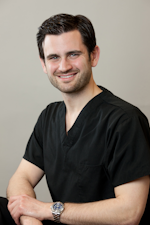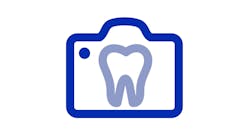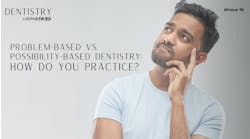In the late 1980s, I was one of the many fans of the second Star Trek iteration: Star Trek: The Next Generation. Like its predecessor from the 1960s, ST:TNG was science fiction at its best. A utopian civilization exploring the universe, provocative ethical dilemmas concealed under space battles, and, of course, really cool futuristic technology. It’s amazing to me just how many technical advancements ST:TNG predicted—touch-screen computers, tablets, and voice-commanded programs are just some of the everyday items we have now that were only a sci-fi dream back then.
One of my favorites was the replicator. After a tough day of commanding the Enterprise, Captain Jean-Luc Picard would retreat to his quarters and bark commands to the device: “Tea. Earl Grey. Hot.” A cup of tea would materialize from thin air, sitting neatly on a saucer. As a child, I could imagine I might live in a world of handheld computers someday, but a replicator was surely just a fantasy that could never be realized. But here we are in 2019 with dentists summoning dentures and surgical guides from pools of resin.
The story begins in 1986 when Charles Hull obtained his first patent for a process he called “stereolithography,” more commonly referred to as SLA today. He went on to found his company, 3D Systems, and to offer the first commercial rapid prototyping printers. Industries took note and began to find ways that this new world of additive manufacturing could improve their workflows.
One of the earliest and most successful uses of 3-D printing in dentistry came in the late 1990s from Align Technology, a company that could print aligners by the tens of thousands instead of by the hundreds with hands. But the technology was still quite expensive and best left to large-scale manufacturing, so 3-D printers remained in the hands of large dental laboratories and other commercial enterprises.
Over the past few years, however, an industrious group of dentists have begun 3-D printing in their offices. The cost of the equipment has gone down, the quality of the software and resin materials has improved, and some dental manufacturers have created printers specifically for our profession. In this issue, I’ve invited Drs. Shawn Van de Vyver, Jason Lipscomb, Craig Harder, and Lou Shuman to discuss where this technology is now and where it’s headed.
3-D printing is not a fad. We’re already beginning to print more complex, multimaterial products in other fields. I believe the next great leap forward for our profession will be when we can predictably print final restorations, such as ceramic crowns and alloys for implant restorations, and that doesn’t seem too far off into the future. Currently, ceramics can be printed using the selective layer sintering (SLS) process, though the dental application of this has yet to be fully realized. I have little doubt that in the next few years we’ll be discussing the emerging field of bioprinting—the creation of inert scaffolds or even living tissues layer by layer.
Cheers, with a cup of hot Earl Grey,
Chris Salierno, DDS







